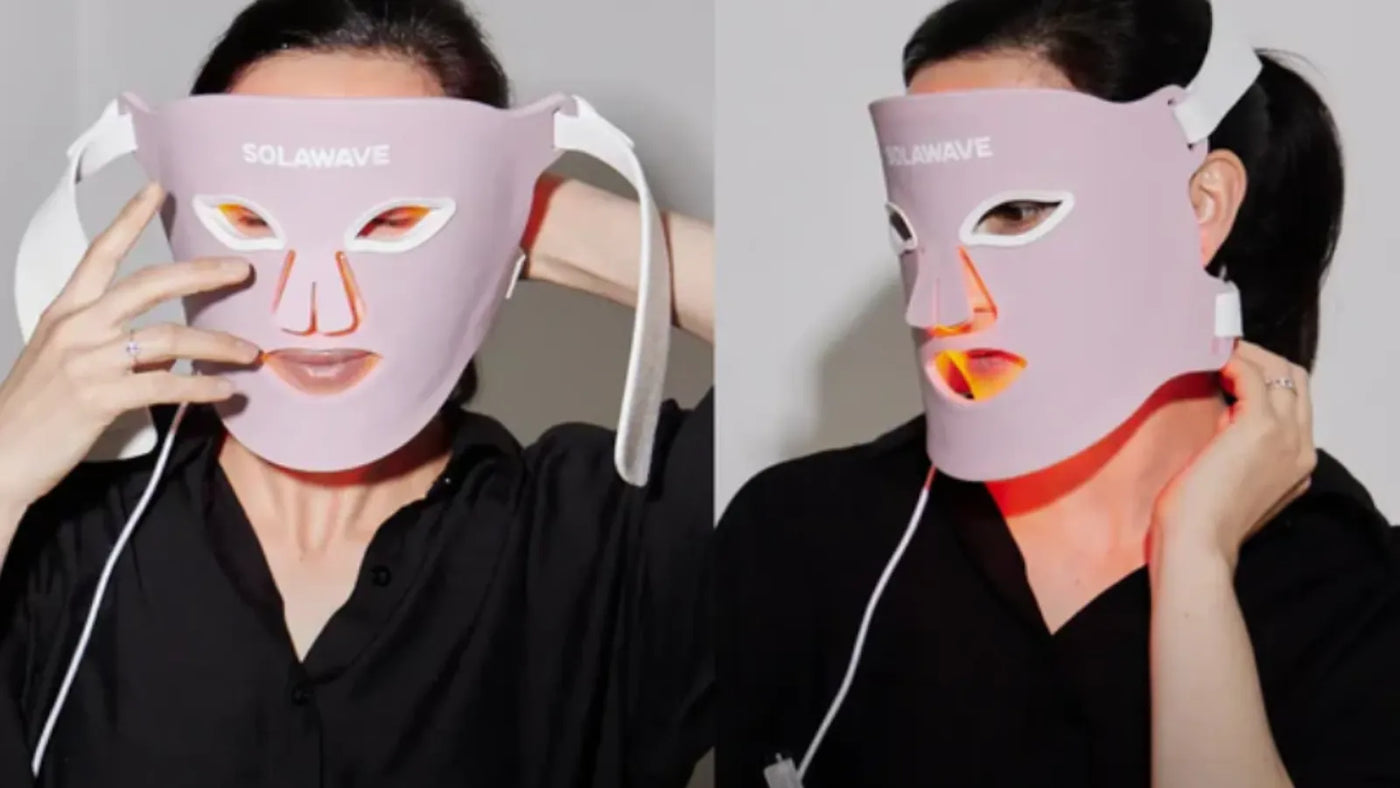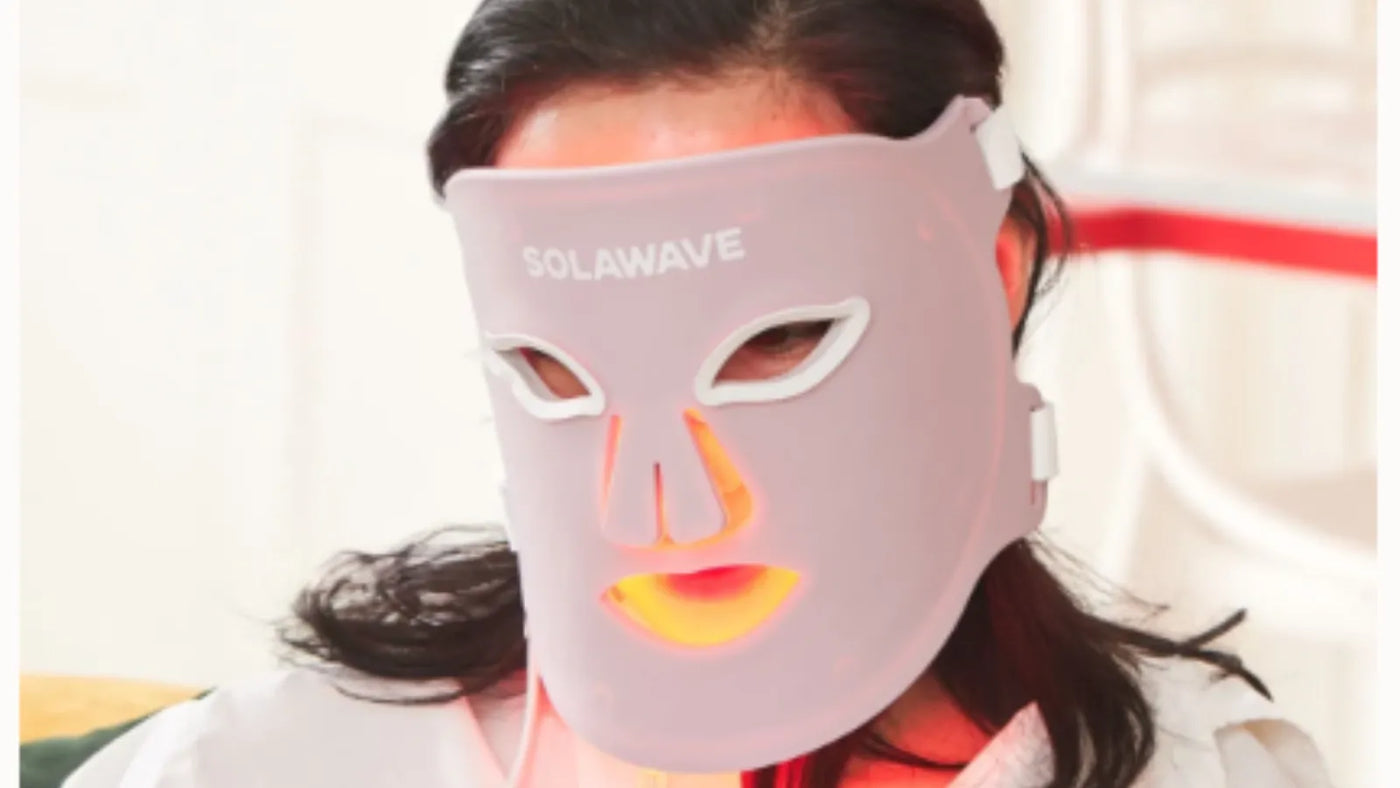

Red Light Therapy for Psoriasis: Everything To Know
Red light therapy has gained a lot of attention in recent years for its potential to improve the appearance of skin. Many people are drawn to this non-invasive approach, hoping it can help with their own skin concerns. However, it’s important to understand what red light therapy can — and cannot — do, especially when it comes to chronic conditions like psoriasis.
If you’re considering red light therapy for psoriasis, you should know that there is no scientific evidence supporting it as a cure or treatment for this condition. While red light therapy may offer some aesthetic benefits for the skin, such as a healthier-looking complexion, it is not a medical solution.
This article is designed to provide clear, factual information about red light therapy and what has actually been shown to help with psoriasis, so let's dive in.
What Is Psoriasis?
Psoriasis is a chronic autoimmune skin condition that causes your immune system to mistakenly attack healthy skin cells. This triggers a rapid buildup of skin cells on the surface, leading to thick, scaly patches known as plaques. These plaques often appear red or silvery and can develop anywhere on your body, though they are most common on the elbows, knees, scalp, and lower back.
The symptoms of psoriasis extend beyond the visible plaques. You might notice itching, burning, or soreness in the affected areas. In some cases, the skin can crack and bleed, causing pain and discomfort. Psoriasis can also affect your nails, making them thickened, pitted, or ridged. For some people, the condition can even lead to joint pain and swelling, a related issue called psoriatic arthritis.
Living with psoriasis can affect daily life. The appearance of plaques can impact self-esteem and confidence, making social situations or activities that expose skin feel challenging. The discomfort and pain from flare-ups can disrupt sleep, work, and overall well-being. Managing psoriasis often requires ongoing attention to skincare routines and lifestyle choices, which can be both physically and emotionally demanding.
Psoriasis is also more common than many people realize. According to the National Psoriasis Foundation, more than 8 million people in the United States are affected by this condition, and about 125 million people worldwide live with psoriasis. The severity of symptoms varies widely — some individuals experience only small patches, while others have widespread plaques that cover large areas of their body.
Because psoriasis is a chronic condition, it tends to cycle through periods of flare-ups and remission. While there is currently no cure, there are effective medical treatments that can help manage symptoms and improve your quality of life.
What Is Red Light Therapy?
Red light therapy is popular in the skincare world for its aesthetic benefits. Many people use it to reduce the appearance of fine lines and wrinkles, improve skin texture, and achieve a brighter complexion. Devices like those from Solawave are designed to be safe for at-home use, are non-invasive, and do not cause pain or irritation.
Red light therapy, also known as photobiomodulation, is a non-invasive skincare technique that uses specific wavelengths of red and near-infrared light to interact with your body at a cellular level. This technology was first explored by NASA in the 199s for wound healing in space and has since been studied extensively for its effects on skin and tissue health.
When you use red light therapy, medical-grade LEDs deliver targeted wavelengths of light that penetrate the deeper layers of your skin. Your body responds to these wavelengths by converting the light into usable energy, which helps your skin cells renew, repair, and restore themselves. This process supports your skin’s natural biological functions, such as collagen and elastin production. Over time, consistent use of red light therapy can lead to firmer, smoother, and more radiant-looking skin.
Can Red Light Therapy Help with Psoriasis?
No, and it’s important to distinguish red light therapy from the actual light therapy, called medical phototherapy, used for psoriasis. Medical phototherapy for psoriasis typically involves ultraviolet (UV) light, which is a different part of the light spectrum and is administered under medical supervision to help manage psoriasis symptoms. Red light therapy, on the other hand, does not use UV light and is not recognized as a medical treatment for psoriasis. Its benefits are primarily aesthetic, supporting your skin’s appearance rather than addressing the underlying causes or symptoms of psoriasis.
Current scientific evidence does not support red light therapy as a cure or treatment for psoriasis. While some early studies have explored the effects of various light wavelengths on skin health, there is no reliable clinical data showing that red light therapy can reduce the severity or frequency of psoriasis flare-ups. The medical community does not recommend red light therapy as part of a psoriasis treatment plan.
Medical phototherapy for psoriasis, also known as UV light therapy, is a well-established and FDA-approved treatment. This approach uses controlled doses of ultraviolet B (UVB) or, less commonly, ultraviolet A (UVA) light to slow the rapid growth of skin cells that causes psoriasis plaques. UV phototherapy is always administered under the guidance of a healthcare professional, as improper use can lead to skin damage and increase the risk of skin cancer.
If you are living with psoriasis, consult your dermatologist or healthcare provider before trying new therapies.
Proven Medical Treatments for Psoriasis
When it comes to managing psoriasis, there are several FDA-approved and medically recognized treatments that have been shown to effectively reduce symptoms and improve quality of life. The right treatment for you will depend on the severity of your psoriasis, the areas of your body affected, and your overall health. Make sure to work closely with a healthcare provider to find the most effective and safe approach for your individual needs.
Topical Treatments
For many people with mild to moderate psoriasis, topical treatments are often the first line of defense. These are medications that you apply directly to the affected areas of your skin. The most commonly used topical treatments include:
-
Corticosteroids: These anti-inflammatory creams or ointments help reduce redness, swelling, and itching. They are available in various strengths, and your doctor will recommend the right one based on the severity and location of your plaques.
-
Vitamin D Analogues: These synthetic forms of vitamin D, such as calcipotriene, help slow down the growth of skin cells. They are often used in combination with corticosteroids for better results.
-
Coal Tar and Other Topicals: Coal tar products can help reduce scaling, itching, and inflammation. Other prescription creams, like retinoids or calcineurin inhibitors, may also be recommended for certain cases.
Phototherapy
Phototherapy, or light therapy, is a medically supervised treatment that uses specific wavelengths of ultraviolet (UV) light to slow the rapid growth of skin cells associated with psoriasis. There are two main types:
-
UVB Phototherapy: This treatment uses a controlled dose of ultraviolet B light, which penetrates the skin and helps reduce inflammation and scaling. UVB therapy can be delivered as broadband or narrowband, with narrowband UVB being the most common and effective.
-
PUVA Therapy: PUVA stands for psoralen plus ultraviolet A. In this treatment, you take a medication called psoralen (either orally or applied to the skin) that makes your skin more sensitive to UVA light. Then, your skin is exposed to UVA light in a controlled setting. PUVA is typically reserved for more severe cases or when other treatments haven’t worked.
Phototherapy is always administered under the supervision of a healthcare professional to ensure safety and effectiveness. It is not the same as red light therapy, which does not use UV light and is not a recognized treatment for psoriasis.
Systemic Medications
For moderate to severe psoriasis, or when other treatments haven’t provided enough relief, systemic medications may be necessary. These are drugs that work throughout your entire body and are usually prescribed when psoriasis is widespread or significantly impacts your quality of life. Systemic treatments include:
-
Oral Medications: Drugs like methotrexate, cyclosporine, and acitretin help control the immune system’s activity and reduce inflammation. These medications require careful monitoring due to potential side effects.
-
Biologic Injectables: Biologics are a newer class of drugs that target specific parts of the immune system involved in psoriasis. They are given by injection or intravenous infusion and have been shown to be highly effective for many people. Examples include adalimumab, etanercept, and ustekinumab.
The Importance of Professional Guidance
Psoriasis is a complex condition that can vary greatly from person to person. What works for one individual may not work for another, and some treatments can have significant side effects or interactions with other medications. That’s why it’s so important to consult a dermatologist or healthcare provider for a proper diagnosis and personalized treatment plan. Your provider can help you weigh the benefits and risks of each option and monitor your progress to ensure the best possible outcome.
Remember, while there are many effective medical treatments for psoriasis, there is currently no cure. Ongoing management and regular check-ins with your healthcare team are key to keeping your symptoms under control and maintaining your quality of life.
Conclusion
Red light therapy is not a treatment or cure for psoriasis. While it may offer some aesthetic benefits for your skin, such as improving overall tone or texture, it does not address the underlying causes or symptoms of psoriasis. If you are living with psoriasis, it’s essential to rely on proven, medically recognized treatments and to work closely with a healthcare professional to manage your condition effectively.
Always consult your dermatologist or healthcare provider before trying new therapies or making changes to your treatment plan. Your doctor can help you find the safest and most effective options for your unique needs.
Disclaimer: This article is intended for informational purposes only, and should not be interpreted as medical advice or guidance. Always seek medical advice and care from a trusted healthcare professional.
Sources:





















